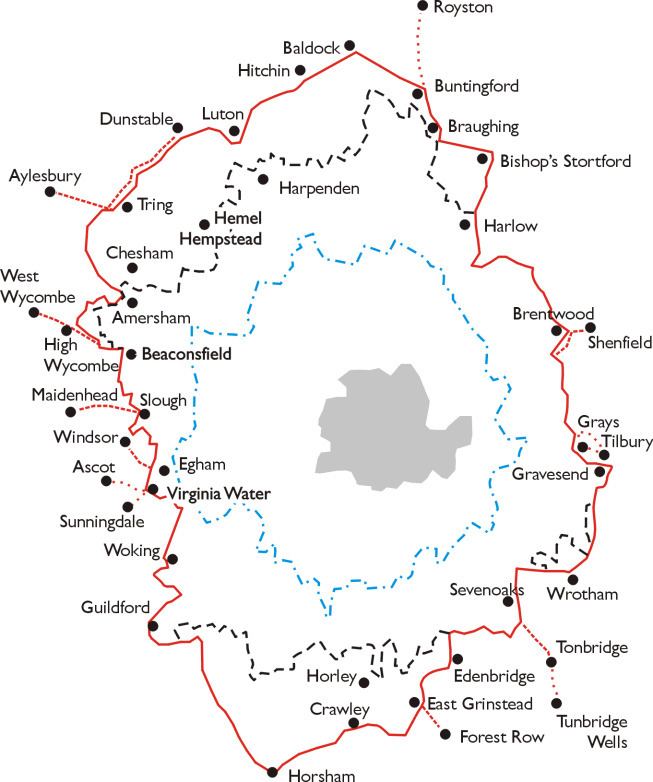Type Public body | Purpose Transport authority | |
 | ||
Region served London and within 30 miles (48 km) of Charing Cross | ||
The London Passenger Transport Board (LPTB) was the organisation responsible for local public transport in London and its environs from 1933 to 1948. In common with all London transport authorities from 1933 to 2000, the public name and brand was London Transport.
Contents
History
The LPTB was set up by the London Passenger Transport Act 1933 enacted on 13 April 1933. The bill had been introduced by Herbert Morrison, who was Transport Minister in the Labour Government until 1931. Because the legislation was a hybrid bill it had been possible to allow it to 'roll over' into the new parliament under the incoming National Government. The new government, although dominated by Conservatives, decided to continue with the bill with no serious changes, despite its extensive transfer of private undertakings into the public sector. On 1 July 1933 the LPTB came into being, covering the "London Passenger Transport Area".
The board
The LPTB had a chairman and six other members. The members were chosen jointly by five "appointing trustees" listed in the Act:
The Act required that the board members should be "persons who have had wide experience, and have shown capacity, in transport, industrial, commercial or financial matters or in the conduct of public affairs and, in the case of two members, shall be persons who have had not less than six years' experience in local government within the London Passenger Transport Area."
The first chairman and vice-chairman were Lord Ashfield and Frank Pick, who had held similar positions with the Underground Group. Members of the board had a term of office of between three and seven years, and were eligible for reappointment.
Members
Latham and Cliff become chairman and vice-chairman of the successor London Transport Executive in 1947.
London Passenger Transport Area
The London Passenger Transport Area had an approximate radius of 30 miles (48 km) from Charing Cross, extending beyond the boundaries of what later officially became Greater London to Baldock in the north, Brentwood in the east, Horsham in the south and High Wycombe in the west.
Responsibilities
Under the Act the LPTB acquired the following concerns:
Railways
Tramways
Buses and coaches
Further history
The LPTB was empowered to enter into co-ordination agreements with the main line railway companies concerning their suburban services.
Ninety-two transport and ancillary undertakings, with a capital of approximately £120 million, came under the LPTB. Central buses, trolleybuses, underground trains and trams were painted in "Underground" and "London General" red, coaches and country buses in green, with coaches branded "Green Line". Already in use on most of the tube system, "UNDERGROUND" branding was extended to all lines and stations. The name was said to have been coined by Albert Stanley, 1st Baron Ashfield in 1908 when he was General Manager of the Underground Group.
The LPTB embarked on a £35 million capital investment programme that extended services and reconstructed many existing assets, mostly under the umbrella of the 1935–1940 "New Works Programme". Although only about £21 million of the capital was spent before World War Two it allowed extensions to the Central, Bakerloo, Northern and Metropolitan lines; new trains and maintenance depots; extensive rebuilding of many central area stations (such as Aldgate East); and replacement of much of the tram network by what was to become one of the world's largest trolleybus systems. During this period two icons of London Transport were first seen: 1938 tube stock trains and the RT-type bus. Although curtailed and delayed by the outbreak of World War Two, the programme also delivered some key elements of the present overground sections of the Underground system. However, the most profound change enacted by the Board through the new works was the transition from tram to trolleybus operation alluded to earlier. In 1933 the LPTB had operated 327 route miles of tramways and 18 route miles of trolleybuses. By 1948 these totals were 102 and 255 miles respectively. The final disappearance of trams in 1952 was regretted by some sections of the staff and the public, but in terms of impact on users this was probably the most visible and dramatic change in the period.
The LPTB continued to develop the corporate identity, design and commercial advertising that had been put in place by the Underground Group. This included stations designed by Charles Holden; bus garages by architects such as Wallis, Gilbert & Partners; and more humble structures such as bus stops and shelters. The posters and advertising issued by the LPTB were often of exemplary quality and are still much sought after.
The LPTB was replaced in 1948 by the London Transport Executive under the Transport Act 1947. It was effectively nationalised, but with considerable autonomy. The LPTB continued to exist as a legal entity until wound up on 23 December 1949.
